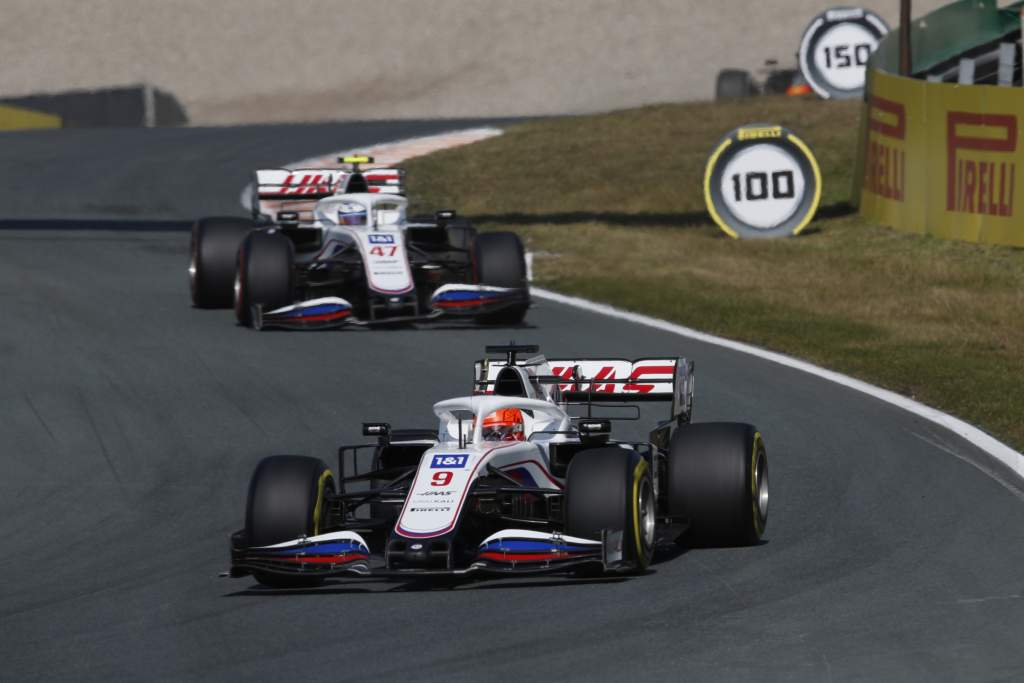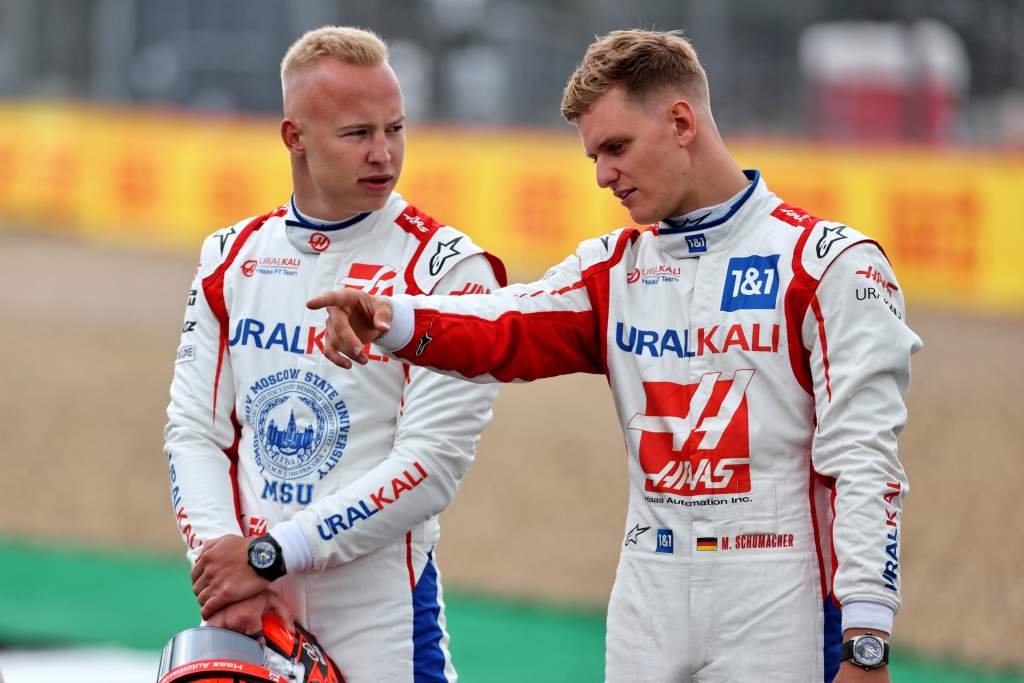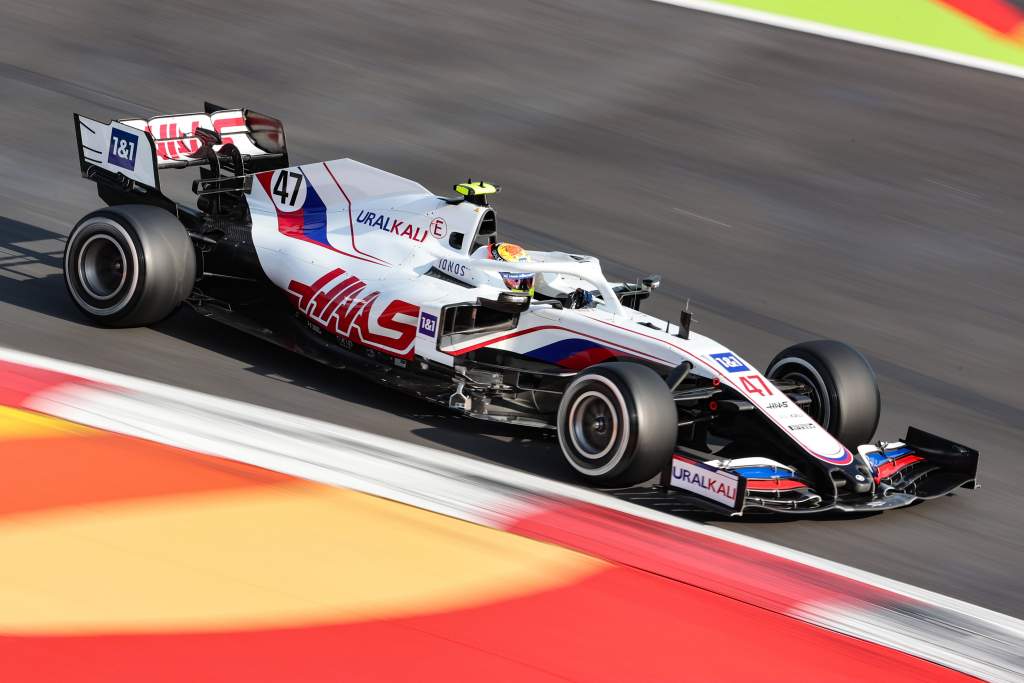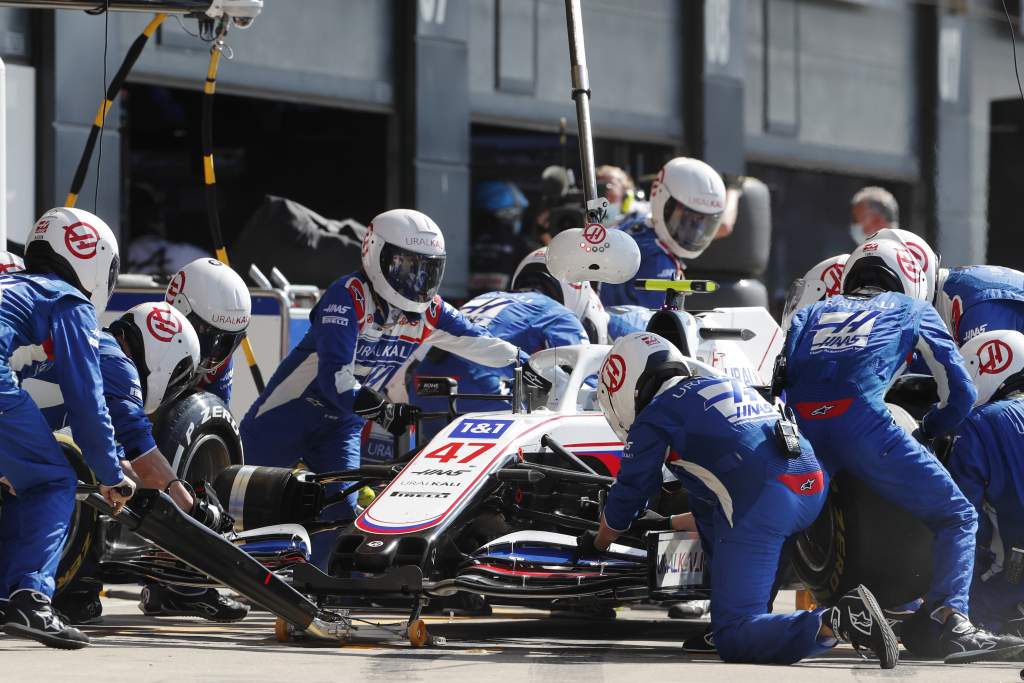Up Next

Technical director Simone Resta described Haas’s 2021 season as a “sabbatical year” in terms of what happened on circuit. But while the trackside team grafted relentlessly in pursuit of the smallest of small victories – a couple of Q2 appearances and just five top-15 finishes – the most important work was happening away from the circuit.
Resta, who joined the team on secondment from Ferrari in January, was charged with overseeing a technical reshuffle as Haas increased its in-house design capacity. Still reliant on its technical partnership with Ferrari for many parts, and working with a reduced input from Dallara, it was a team evolving and focused on the major rules revamp for 2022.
The result of this decision was a long and painful year on track. The logic behind effectively giving up on 2021 before it had started was sound given the benefit of any development resources put into the car would be marginal compared to the significant gains for the long-term that the 2022 machine offers. But it did make the Haas team’s presence on the grid literally pointless.

To the credit of those lumbered with making the best of a bad job, Haas battled on and performed credibly against its direct opposition late in the season. That suggests that the team trackside was extracting close to the full potential of what was, compared to the rest, a limited package.
In effect, it was the 2020 car – itself not developed after testing with upgrades designed but never manufactured – cut and shut to comply with the modified aero rules “as fast as we could”, as Resta puts it. Added to that was the benefit of the improved Ferrari power unit, which also required some packaging tweaks to suit the modified cooling system.
Add to the equation two rookie drivers, Mick Schumacher and Nikita Mazepin, and you have what was little more than a year of treading water on track. That was complicated by friction between the drivers, the majority of which appeared to be generated on Mazepin’s side, that boiled over several times.
Team principal Guenther Steiner describes it as a “transitional” season, one to be endured rather than enjoyed. That Haas ended the season with no points, last in the championship and a best finish of 12th came as no surprise.

Given the car wasn’t developed during the season, to have its most competitive showings – 2.2% off the pace in Saudi Arabia, with relatively good race pace on the way to 16th and 18th in the preceding race in Qatar – late in the season was encouraging. That performance at Losail was more significant given the nature of the track compared to Jeddah.
This at least proved that there was no lack of effort at Haas as the season wound down, although it’s also necessary to factor in the improvement of the drivers as the season. As Schumacher admits, it’s possible that the performance was in the car earlier in the season but simply not being accessed.
“It comes down to the team and I working even better together and figuring out what comments I need to give to get the right response and right changes in terms of set-up,” said Schumacher when asked by The Race what he could have done with the early-season Haas given the experience built over his first season. “That will help us in many ways for next year.
“Maybe we would have started off strong and even closer [to the midfield] and therefore closer for the whole [first] part of the season. And then towards the end of the season, you can pick up more and be more in front of the others, or at least with them.”

Mazepin, meanwhile, did show occasional sparks in terms of his underlying pace improving, particularly once he got his new monocoque at Spa after struggling with the two he’d used in the first half of the season. But he never outqualified Schumacher on pace, beating him only in Baku – where Schumacher crashed before setting a time in Q1 – and Hungary – where Schumacher damaged his chassis in FP3 and couldn’t run in qualifying
In a car with a season-average deficit of just over 3% – more than 1% off ninth-best Williams – the drivers can’t be blamed for the lack of points. But when the car was in a window where its downforce deficit was mitigated, it at least showed a little form.
“It [Qatar] was one of our best races in the year,” Resta tells The Race. “In those conditions on a quite front-limited track, the car has probably been the least bad.
“Similarly, in conditions where rear-end performance is more the limiting factor, our car showed its weaknesses. And [it] has been exposed more at high-downforce tracks.
“So when it’s about running a moderate downforce level with a limitation on the front end, we were not too bad.”

Unfortunately, even at its best the Haas was never a serious points threat. The closest it came was in Hungary, where Schumacher ran in the points for 24 laps but was powerless to prevent competitive gravity dropping him to 12th place. Fifteen times out of 21, the last classified finisher was a Haas driver.
What happened on track was also of limited use for 2022. The restricted team worked well trackside under Ayao Komatsu and what learning opportunities that were offered were seized.
“We experimented with a few things we could do to be in better shape for next year,” said Resta. “So testing new sensors, new technology and stuff like that.
“We used it as much as we could as a platform to go ahead for next year. Unfortunately, the regulations are so different that the work was limited, but nevertheless we have done our best to learn.”
But the fundamental story of Haas trackside was a team that simply had to stay together and do what it could through a third consecutive difficult year. Team principal Guenther Steiner feels the spirit that made Haas the little team that could from 2016-2018, finishing in the top six in its first two grands prix and then having the fourth-fastest car in the last of those years, survived.

“I’m impressed with how the guys kept on going, they never gave up,” said Steiner when asked about the team’s efforts. “We knew where we would end up but we always keep fighting. If we are a tenth behind, we try to make it half a tenth.
“About 60% of the people have been here from the beginning of the team, so they know we can do it and everybody wants to be good to go and get points again and fight in the midfield.
“Nobody in the team gave up ever. That is the most important thing that keeps the team going. I don’t have to keep it going – this attitude keeps it going.”
By remaining a credible F1 team through these difficult times and focusing on the 2022 car for the new regulations, Haas has ensured that it will be in better shape next season. It’s not going to be winning races suddenly in 2022, but as a result of these efforts it has the potential to be a midfield dark horse.






